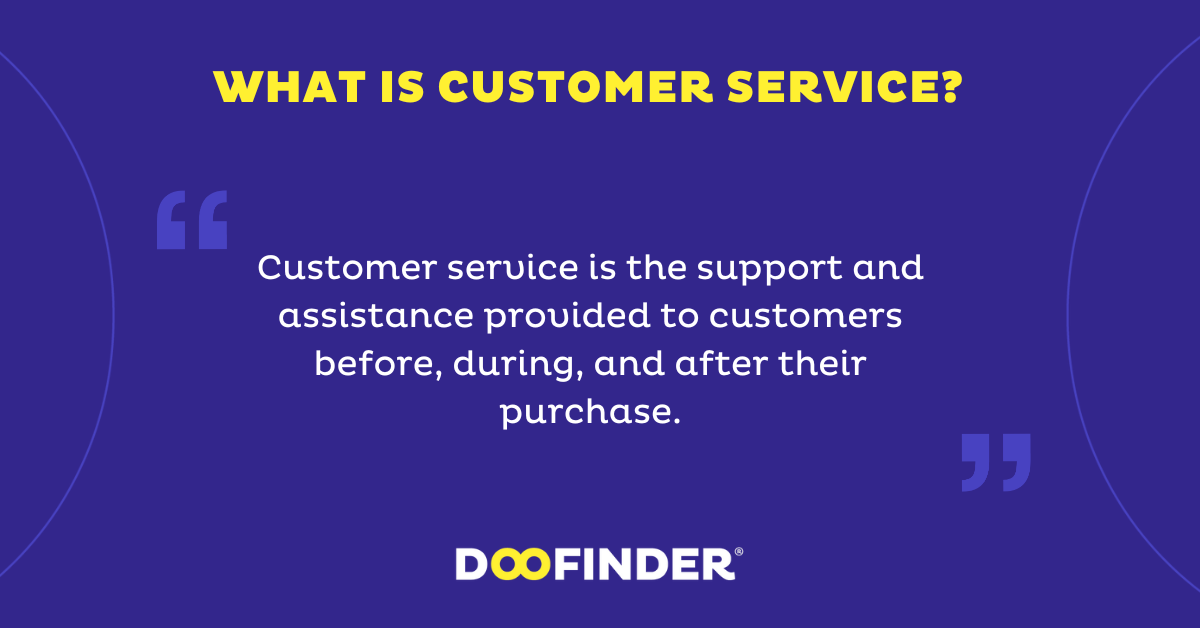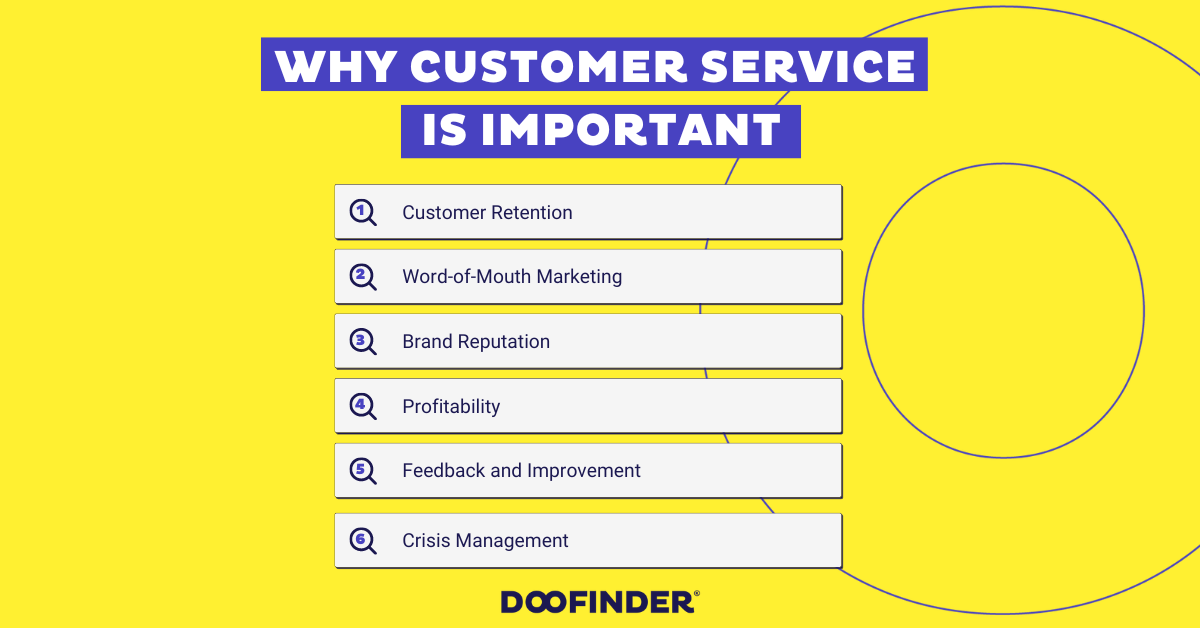Customer service is undeniably the bedrock of a thriving business, playing a pivotal role in shaping the overall customer experience.
It encompasses the support and assistance offered to customers not only during their purchase journey but also before and after their interactions with a company.
The impact of exceptional customer service is profound, capable of transforming a one-time buyer into a devoted, repeat customer while fostering positive reviews and word-of-mouth referrals.
In this article, we embark on a journey to explore the significance of customer service, delving into ways to enhance its quality.
We’ll delve into 25 invaluable customer service tips and tricks that are bound to elevate your customer experience and set your business apart from the rest.
By the end of this read, you’ll be equipped with the knowledge and strategies necessary to build lasting relationships with your customers and cultivate a loyal clientele base.
So, let’s dive in and unlock the secrets to unparalleled customer service excellence!
What is Customer Service?

Customer service is the support and assistance provided to customers before, during, and after their purchase. It’s the backbone of any successful business.
It’s not just about resolving complaints; it’s about creating an outstanding experience that leaves customers feeling valued and satisfied.
Exceptional customer service goes beyond meeting basic needs; it involves anticipating and exceeding expectations.
It’s about building strong relationships with your customers, fostering loyalty, and establishing a positive brand reputation.
Ultimately, customer service is the key differentiator that sets businesses apart in today’s competitive landscape.
Why is Customer Service Important?

Customer service plays a vital role in determining the success of any business. Here’s why it’s so important:
- Customer Retention: Excellent customer service fosters loyalty and keeps customers coming back for more.
- Word-of-Mouth Marketing: Satisfied customers are more likely to share their positive experiences, which can lead to new customers.
- Brand Reputation: Good customer service enhances your brand’s reputation and sets you apart from competitors.
- Profitability: Happy customers tend to spend more and are less price-sensitive.
- Feedback and Improvement: Through customer interactions, you can gain valuable feedback to improve your products and services.
- Crisis Management: During difficult times, strong customer service can help mitigate negative impacts.
The significance of customer service cannot be stressed enough. It has a profound impact on your brand reputation and bottom line.
Happy customers become loyal advocates, spreading positive word-of-mouth and driving new business.
On the other hand, poor customer service can lead to negative reviews and a damaged image, which can be hard to recover from.
According to a study conducted by Zendesk:
- 86% of customers are willing to pay more for better customer service.
- 95% of customers share bad experiences with others.
- 87% of customers share good experiences.
These statistics highlight the immense value of providing exceptional customer service. When customers have positive experiences, they are more likely to become repeat buyers and refer others to your business.
This leads to increased customer retention, higher sales, and a stronger bottom line. Additionally, satisfied customers can become brand ambassadors, helping to build your reputation and attract new customers organically.
How to Improve Customer Service

Improving customer service is an ongoing journey that requires dedication, adaptability, and a customer-centric mindset. Here are some practical steps to take your customer service to the next level:
- 1. Assess Current Customer Service Practices: Begin by evaluating your current customer service processes. Identify strengths and weaknesses to understand where improvements are needed.
- 2. Set Clear Customer Service Goals: Define specific, measurable, achievable, relevant, and time-bound (SMART) goals for your customer service team. Having clear objectives will keep everyone focused on continuous improvement.
- 3. Develop a Customer-Centric Culture: Make customer satisfaction a top priority throughout your organization. Train and empower employees at all levels to prioritize customer needs.
- 4. Invest in Employee Training: Equip your customer service team with the necessary skills and knowledge to handle various customer interactions effectively. Training should focus on communication, problem-solving, and product knowledge.
- 5. Foster Empathy and Active Listening: Train your team to be empathetic and actively listen to customers’ concerns. Understanding customers’ emotions and needs will help build trust and rapport.
- 6. Implement Customer Feedback Mechanisms: Encourage customers to provide feedback through surveys, reviews, and other channels. Analyze this feedback to identify areas for improvement.
- 7. Act on Customer Feedback: Use the feedback you receive to make meaningful changes to your products, services, and processes. Communicate to customers that their input is valued and taken seriously.
- 8. Leverage Technology: Use customer service tools like CRM software, chatbots, and ticketing systems to streamline processes and provide faster responses to customer inquiries.
- 9. Provide Omni-Channel Support: Offer customer support across various channels, including phone, email, live chat, social media, and in-person if applicable. This ensures that customers can reach you in their preferred way.
- 10. Personalize Customer Interactions: Use customer data to personalize interactions. Address customers by name and tailor responses based on their previous interactions and preferences.
- 11. Resolve Issues Promptly: Respond to customer queries and complaints as quickly as possible. Avoid keeping customers waiting, as it can lead to frustration and dissatisfaction.
- 12. Apologize and Make Amends: When mistakes happen, apologize sincerely and take responsibility for resolving the issue. Offer appropriate compensation, discounts, or gestures of goodwill as necessary.
- 13. Empower Frontline Employees: Give your customer service representatives the authority to make decisions and resolve issues without unnecessary escalation.
- 14. Create Self-Service Options: Develop comprehensive FAQs, knowledge bases, and tutorials to empower customers to find solutions independently.
- 15. Monitor Social Media: Stay active on social media and promptly respond to customer inquiries and comments. Social media is a powerful platform for engaging with customers and managing your brand reputation.
- 16. Celebrate Customer Service Success: Acknowledge and celebrate exceptional customer service efforts within your team. Recognition and rewards boost morale and encourage a culture of excellence.
- 17. Benchmark Against Competitors: Keep an eye on your competitors’ customer service practices. Identify areas where you can outperform them and stand out in the market.
- 18. Stay Updated with Industry Trends: Stay informed about the latest trends and best practices in customer service. Continuously adapt your strategies to meet evolving customer expectations.
- 19. Train for Upselling and Cross-Selling: Train your team to identify upselling and cross-selling opportunities, but do so in a non-pushy manner that aligns with the customer’s needs.
- 20. Offer Post-Purchase Support: Follow up with customers after their purchase to ensure their satisfaction and address any post-purchase concerns. This could be done through a phone system or email.
25 Customer Service Tips with Examples

Now that we’ve covered how to improve customer service let’s explore 25 practical customer service tips to help you deliver exceptional experiences to your valued customers:
1. Listen Actively
Pay attention to your customers and show genuine interest in their concerns. Actively listening allows you to understand their needs and provide effective solutions.
- A customer calls your support line with an issue regarding a recent purchase. Instead of rushing through the conversation, the customer service representative listens carefully, asks follow-up questions, and takes notes to fully understand the problem.
2. Empathize
Put yourself in your customers’ shoes to understand their feelings and perspectives. Empathy helps you connect with them on a deeper level, fostering trust and loyalty.
- A customer contacts your online store to inquire about a delayed shipment. The representative empathizes with the customer’s frustration and expresses understanding of the inconvenience caused by the delay.
3. Be Responsive
Respond promptly to customer inquiries and be available through various channels. Whether it’s phone, email, or social media, being accessible shows that you prioritize customer needs.
- A customer sends an email requesting product information. Your customer service team responds promptly within a few hours, providing comprehensive details and offering further assistance.
4. Personalize Interactions
Address customers by name and tailor your responses to their individual needs. Personalization demonstrates that you value each customer as a unique individual.
- A loyal customer contacts your company to inquire about new products. The representative greets the customer by name, referencing previous purchases, and tailors product recommendations based on their preferences.
5. Train Your Team
Invest in training to equip your team with the necessary skills and knowledge. Properly trained employees are better equipped to handle customer interactions effectively.
- New customer service representatives undergo thorough training, including role-playing scenarios and shadowing experienced team members, to ensure they are well-prepared to handle diverse customer interactions.
6. Anticipate Needs
Go the extra mile by anticipating customer needs and offering proactive solutions. By being one step ahead, you can surprise and delight customers with your attentiveness.
- A customer calls a hotel to book a room for a vacation. The receptionist proactively offers information about nearby attractions and activities to enhance the guest’s experience.
7. Apologize Sincerely
If mistakes happen, apologize genuinely, and take ownership of the issue. A sincere apology can turn a negative experience into an opportunity to showcase your commitment to customer satisfaction.
- A restaurant guest complains about receiving the wrong order. The server immediately apologizes, acknowledges the error, and swiftly arranges for the correct meal, accompanied by a complimentary dessert as an apology.
8. Handle Complaints Gracefully:
Turn complaints into opportunities to showcase your dedication to customer satisfaction. Address complaints promptly and effectively, offering solutions that exceed expectations.
- A dissatisfied customer reaches out on social media about a defective product. The company’s social media team responds courteously, offers to replace the item, and provides clear instructions for the return process.
9. Stay Positive:
Maintain a positive attitude, even during challenging interactions. A positive demeanor can help diffuse difficult situations and leave a lasting impression on customers.
- Despite facing a challenging customer situation, a support representative maintains a positive and professional attitude throughout the interaction, ensuring the customer feels respected and heard.
10. Offer Rewards:
Implement loyalty programs or special offers to show appreciation for your repeat customers. Rewarding loyalty encourages customer retention and builds a sense of appreciation.
- An online retailer has a loyalty program where customers earn points for each purchase. After reaching a certain threshold, customers receive exclusive discounts and special offers as a reward.
11. Use Positive Language:
Frame your responses in a positive and reassuring manner. Positive language can create a more pleasant experience for customers and alleviate any concerns or frustrations.
- A customer contacts a software company with a technical issue. The support representative explains the troubleshooting steps using positive language, focusing on the solution rather than the problem.
12. Speed-Up Resolution:
Resolve issues swiftly to avoid customer frustration. Timely resolution demonstrates your commitment to providing efficient and effective solutions.
- A customer reports a billing discrepancy through email. The finance team quickly investigates the issue and resolves it within 24 hours, ensuring the customer’s account is accurately adjusted.
13. Ask for Feedback:
Request feedback to understand what you’re doing well and where you can improve. Feedback is invaluable for identifying areas of improvement and enhancing the customer experience.
- After a customer completes an online shopping experience, a pop-up survey appears, asking for feedback on the website’s usability and product selection.
14. Learn from Feedback:
Use customer feedback constructively to enhance your services. Actively implement changes based on feedback received to show that you value and listen to your customers.
- Based on customer feedback indicating slow shipping times, an e-commerce company revamps its logistics process to expedite deliveries and enhance overall customer satisfaction.
15. Celebrate Success:
Recognize and celebrate customer service achievements within your team. Acknowledging and rewarding exceptional performance boosts morale and encourages ongoing excellence.
- A travel agency holds a monthly meeting to recognize customer service representatives who have received exceptional customer feedback and rewards them with certificates of appreciation.
16. Stay Consistent:
Provide a consistent level of service across all touchpoints. Customers expect a seamless experience regardless of the channel they use to interact with your business.
- A multinational restaurant chain maintains consistent quality across its locations worldwide, ensuring that customers receive the same experience and taste regardless of the branch they visit.
17. Be Transparent:
Communicate openly about any changes or issues that might affect your customers. Transparency builds trust and helps manage customer expectations.
- A software company sends an email to all customers, informing them of an upcoming software update and outlining the new features and improvements it will bring.
18. Encourage Customer Reviews:
Encourage satisfied customers to leave positive reviews on platforms like Google or Yelp. Positive reviews not only enhance your reputation but also act as social proof for potential customers.
- An online retailer includes a thank-you note in each shipment, encouraging customers to leave a review on their website or social media platforms.
19. Monitor Social Media:
Keep an eye on social media for customer feedback and respond promptly. Social media platforms provide an opportunity to engage with customers publicly, demonstrating your commitment to resolving issues.
- A telecommunications company monitors its social media channels for customer queries and promptly responds to complaints, ensuring a positive online reputation.
20. Use Technology Wisely:
Leverage tools like chatbots or CRM systems to streamline customer interactions. Technology can enhance efficiency and provide faster, more accurate support.
- An airline introduces a chatbot on its website to answer frequently asked questions, reducing the load on its customer service team and providing instant responses to simple queries.
21. Stay Updated:
Stay informed about your products or services so you can provide accurate information. Having up-to-date knowledge instills confidence in your customers and allows you to address their queries effectively.
- A tech support team continuously undergoes training to stay updated with the latest software updates and features, enabling them to provide accurate and relevant information to customers.
22. Resolve Queries in One Interaction:
Strive to resolve customer queries in a single interaction. Avoid transferring customers from one department to another, as it can lead to frustration and a poor experience.
- A customer contacts a call center with a billing inquiry, and the representative efficiently addresses the issue without transferring the call to another department.
23. Appreciate Your Team:
Recognize and reward your customer service team for their hard work. A motivated and appreciated team is more likely to go above and beyond to provide excellent service.
- During a team meeting, a manager recognizes exceptional customer service efforts, praising a representative for going above and beyond to assist a difficult customer.
24. Create Self-Help Resources:
Develop easy-to-understand FAQs, knowledge bases, and tutorials to empower customers to find solutions independently. Empowering customers to find solutions on their own saves time for both parties and fosters independence.
- An electronics company provides a comprehensive knowledge base on its website, featuring step-by-step guides and troubleshooting articles to help customers resolve common issues independently.
25. Smile – Even Over the Phone:
Yes, smiling can be heard, so be sure to smile during phone interactions! Smiling affects the tone of your voice and helps create a friendly and welcoming atmosphere.
- A call center representative greets each caller with a warm and friendly tone, knowing that their positive attitude can be heard through the phone and positively influence the customer’s experience.
By implementing these customer service tips and embracing a customer-centric approach, you can create memorable experiences that leave your customers delighted and eager to spread positive word-of-mouth.
Improving your customer service is an ongoing process, but implementing these tips will undoubtedly set you on the path to success. Your dedication to exceptional customer service will be reflected in those shining reviews and long-lasting customer relationships.
Remember, a satisfied customer is not just a one-time buyer; they’re an advocate for your business. So, put these customer service tips into action, and watch your reputation soar!
Start Improving Customer Service with Our Customer Experience Tips
Customer service is the heart of any successful business, and providing excellent service is essential for building a loyal customer base and garnering positive reviews.
By understanding the significance of customer service and implementing the 25 customer service tips and tricks we’ve shared, you can significantly improve your customer experience.
Remember to focus on active listening, personalization, and prompt resolution of customer issues. Train your team to be empathetic and emotionally intelligent in handling customer interactions.
Embrace technology and utilize tools like CRM software and chatbots to streamline processes and provide efficient support.
By prioritizing customer satisfaction and continuously striving to improve your customer service, you’ll create a positive brand reputation that attracts new customers and retains existing ones.
Ultimately, investing in exceptional customer service is a win-win for both your business and your valued clientele.
So, put these customer service tips into action, and watch your business flourish with satisfied customers and glowing reviews!
Always keep in mind that customer service is not just a department; it’s a fundamental philosophy that should permeate every aspect of your organization. Happy serving!








